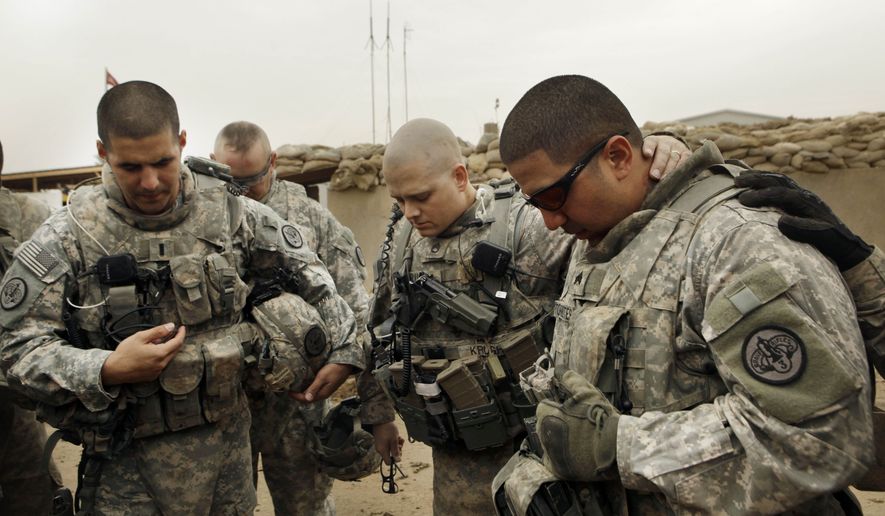The Army is calling on active and retired generals to spread the word in Congress that another spate of automatic budget cuts would cripple America’s largest ground force, an internal memo says.
“A major point is that unless we get relief from sequestration, the Army will soon be unable to fully execute Defense Strategic Guidance requirements and we will be on a path to a hollow Army,” Maj. Gen. Laura Richardson wrote in an Oct. 3 memo to the general-officer community.
Budget caps, or sequestration, are suspended under a bipartisan budget deal but could return in fiscal 2016, beginning next Oct. 1, unless an agreement is reached.
Perhaps no other military leader is raising the alarm more forcefully than Gen. Raymond T. Odierno, the Army chief of staff and former top commander in Iraq.
He has made several public statements recently warning that another sequestration round will come close to breaking the Army.
The active-duty soldier force peaked at 570,000 during the Iraq and Afghanistan wars. It is slated to shrink to about 450,000, but sequestration threatens to squeeze it to 420,000.
PHOTOS: Top 10 U.S. fighter jets
Gen. Odierno has asserted that the 450,000 level is the absolutely lowest the active force can go and still carry out its strategic responsibilities.
“Caps on defense spending,” wrote Gen. Richardson, chief of Army legislative affairs, “are having a devastating impact on the Army, damaging readiness, cutting manpower and gutting modernization programs.”
Her memo, a copy of which was obtained by The Washington Times, said Gen. Odierno “wants to ensure that all Army [general officers] are familiar with the impacts of sequestration so you’re prepared to talk with members of Congress and their staffs during your engagements.”
Recent deployments show a busy U.S. Army. It has sent forces to Europe to war games as a warning to Russian President Vladimir Putin, deployed a headquarters element to Baghdad to advise the Iraqi Security Forces, inserted soldiers into West Africa to help stem the spread of the Ebola virus and maintained ground units in Afghanistan.
“In the past, we maybe focused on one big fight somewhere,” Gen. Odierno recently told a group of defense reporters, according to the Army Times. “We believe, with the new Army operating concept, we have to be able to do multiple small-scale things simultaneously. We might have to be able to operate with smaller capability on four different continents at the same time because that’s the way the world is developing.”
In an interview, Gen. Odierno told the Army Times that more budget cuts will take the Army to a “breaking point.”
PHOTOS: BOOM! U.S. military turns ISIS targets to rubble
He said he would have to further reduce purchases of weapons systems needed to modernize a war-weary force.
“As I look at that, it’s end strength, it’s modernization, it’s readiness,” he said. “I can’t go any faster on end strength, so that means you have to take further reductions in readiness and modernization.”
• Rowan Scarborough can be reached at rscarborough@washingtontimes.com.




Please read our comment policy before commenting.